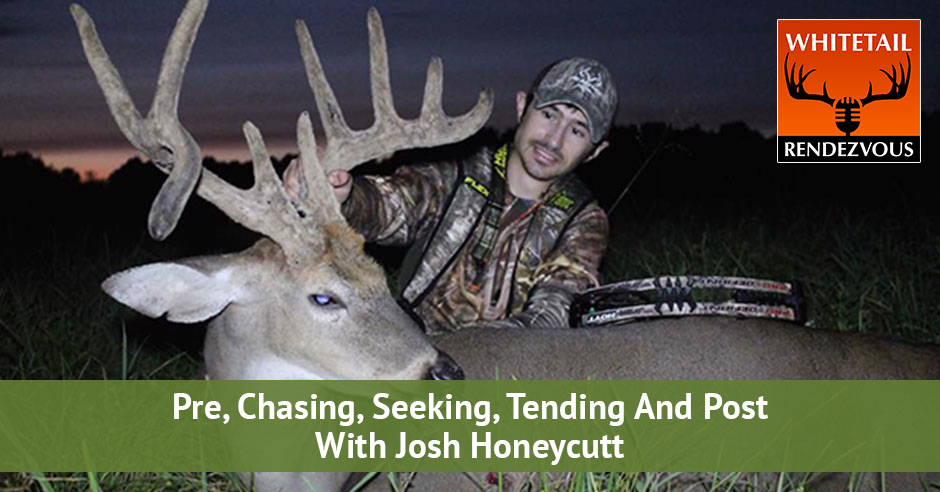
Whether you love or hate the rut, it is undeniably some hunters’ best chance to see a mature buck within shooting range. Pre-rut is the starting line of the most intense four weeks in the whitetail world. On this podcast, you will hear Deer Hunting Editor of RealTree.com, Josh Honeycutt, provide insights on each of the phases – pre-rut, chasing, seeking, tending, and post-rut – and what it takes to hunt in each of them. He shares what to look for as active signs and tips to figure out where to set up a rut stand. Josh knows his stuff and so will you after listening to this podcast.
—
Listen to the podcast here:
Pre, Chasing, Seeking, Tending And Post With Josh Honeycutt
Welcome, Josh Honeycutt, Deer Hunting Editor of Realtree.com. This is the end of a three-part series that you can read from Josh. The first we talked about August prep and early season in September. Now, we’re going to talk about his favorite time during the rut. Everybody loves to hunt the rut. It’s a great time to see bucks. Josh, let’s jump into it.
We all know the rut. That’s what everybody talks about. It’s what everybody loved. It’s not my favorite time of year to hunt. My favorite time of year to hunt is the early season. My second favorite time to hunt as the pre-rut. My third time is probably late season. The rut is probably my least favorite. I’m not saying the rut is bad. I have my own personal thoughts about the rut and reasons why I prefer to hunt outside of the rut. I still do hunt during the rut. As far as action goes, there’s no better time than the rut. The chasing, the breeding activity, the fighting, everything that revolves around or plays in as a factor during the rut is cool and fun to see.
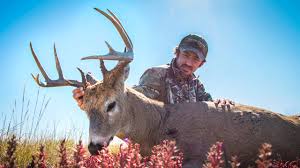
If you’re trying to target one specific deer as our commonly and generally do, the rut is often time, especially the peak rut is the worst time to try to do that. I called a rut in my mind the unprepared hunter’s crutch. I’ve done it myself. I’ve killed a lot of deer during the rut. The rut is a great time to do it. We know from research that the rut is when a buck is most willing to get up and move during daylight. Daylight activity increases throughout the summer, throughout the early season, leading all the way up to the peak of the rut. We know even a mature deer is most willing to move in daylight during the rut and that’s great.
If you are patterning a deer and you’re spending all this time figuring out where they bed, where they feed, what trails they use, all that goes out the window once the rut starts and things change. Instead of that buck bedding right there in that bedding area he’s bedding in all year long. Now, he’s bedding in different places. Leading up to the rut, he’s spending time instead of using those trail networks that it used to get from bed-to-feed all year long that you’ve been patterning, covering and scouting. Now he’s using different trails.
He might be using trails that take him through doe bedding areas, looking for that first hot doe as he swings around and heads over to the cornfields. Things are different. I do prefer to hunt outside of the rut, but when it comes to the rut itself, some people refer to it as seeking, chasing and tending. If I had to choose one of those three, I would probably choose that period where it’s right around the end of the pre-rut leading into the very beginning of that seeking phase. To me, that’s whenever you’re going to see the most and best daylight activity with also a little bit of pattern still left.

To you, the pre-rut starts when?
For us here, the pre-rut usually starts somewhere around October 15th in my mind. You can break it down differently however you want. I look at it early season from the beginning of September until the second week of October. When you get toward the middle of October, it shifts over to that pre-rut. When all the bucks are in their fall ranges, whenever the majority of your bucks or where they are going to be and they’re in their fall range, that’s when I make that shift from, “It’s changed from early season to pre-rut now.” That’s my second favorite period to hunt. From probably October 15th until about November 1st, November 2nd, those first couples of days in November is what I consider pre-rut. You start seeing quite a bit bigger differences. You see a little bit more movement further from those bedding areas, in different places than they were before. I’d say it’s probably about a two-week window, maybe a little bit more that I consider the pre-rut.
That changes a little bit depending on where you are in the country. What are some of the signs that you see that the rut start kicking gear?
There are a lot of things that you can pay attention to. If you see a sudden increase in scrapes, a sudden increase in rubs. There are lots of signs out there. If you’re still patterning deer, maybe you have some trail cameras out. You’re checking cellular trail cameras. You have traditional cameras and you see a sudden change in a mature deer. You see other bucks that you’ve been following, let’s say you’ve been following him for a couple of weeks. You start from October 10th to October 30th and that deer’s doing a pretty consistent thing. At the very end of October, beginning of November, you see a sudden change and he’s not doing it. That’s a sign that you’re transitioning into the rut.
Live your life as God intended you to be. Share on XYou can also watch actual whitetail behavior, if you’re in the tree stand and you see a doe acting pretty squirrelly or she’s got her tail stuck straight out or she’s peeing a lot. There are different subtle behaviors that does especially will make that suggests that they’re nearing estrus. The bulk of the breeding at least where I’m at doesn’t happen until around November 10th to 20th. It’s going to be a peak window that’s about two to three days, somewhere between those two dates. It’s a little bit different from year to year. The big window at least from our area is about November 10th to 20th.
You’re going to have a two to three-day window within that bigger window where the biggest portion of the breeding is going to take place. As you get closer and closer to that window, you can start to analyze the deer behavior and especially with does, you can tell when one is in estrus. As far as bucks go, if those tarsal glands are getting dark, if they’re getting a lot heavier staining on them, that’s a sign that you’re getting closer and closer. During the peak rut is when you’re going to see probably the peak staining, maybe right after the rut. That’s a few things that you can look at.
Their testosterone is up to high so a big deer looks like he’s a linebacker for the Green Bay Packers. He’s huge upfront. You can see that transition if you have trail cameras or you’re watching the deer. You’re not hunting the deer. You’re watching a deer and you can watch that. The other tip is that accident reports start going up. All you have to do is read the accident reports in your newspaper or Google it.
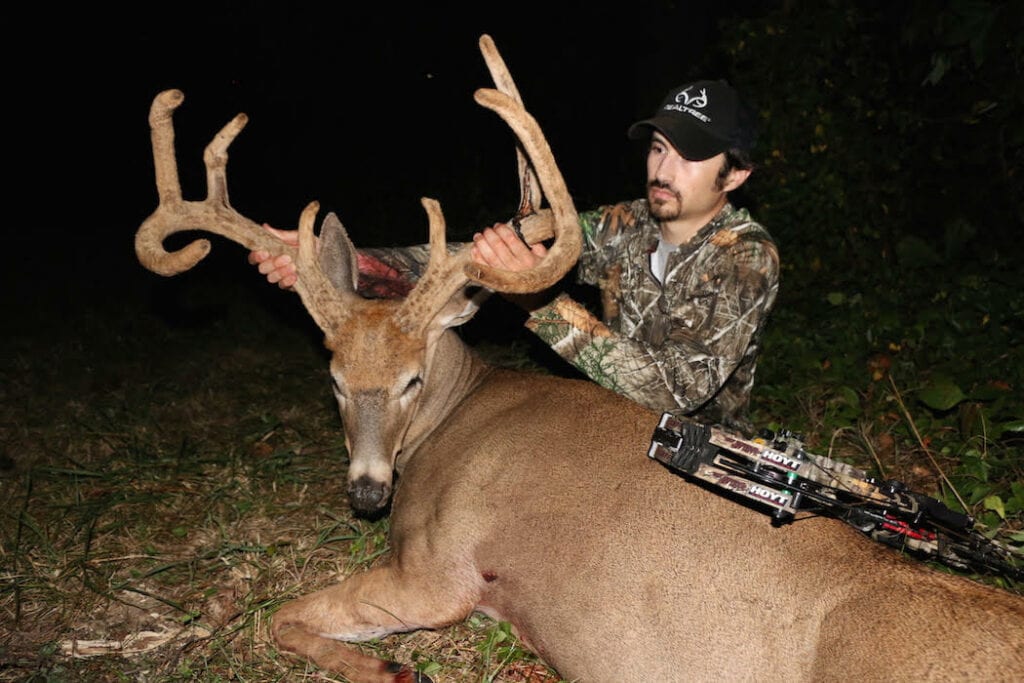
Take a drive down the interstate.
That’s a great indicator for your area to do it. I don’t like to drive at night during the deer season or the rut. The deer ran into the side of my truck. He ran square into the middle side of the truck. I had to get it repaired. Saying that, all this information Josh is sharing about the rut, you can figure it out yourself. In the previous episode, I said about keeping a journal. If you want to be a 365 Hunter and figure out what the deer are doing in your neighborhood, you’ve got to start writing things down because you go, “I’ll remember that.” I can guarantee you won’t.
If you have a journal and go, “The weather was this, the activity was this and the trail camera images gave these.” There are three separate things and all of a sudden you start putting together and see patterns. As Josh has said, he’ll select a deer that he wants to hunt. Another deer comes through and it’s the deer that gets them excited, they’re going to shoot it. You have to learn and become a student of the game. You’ve got to be knowledgeable about what the deer are doing, why they’re doing it and when they’re doing it. Let’s go through the different phases of the rut and the basic activities of what that buck is doing and a doe is doing during each one of those phases.
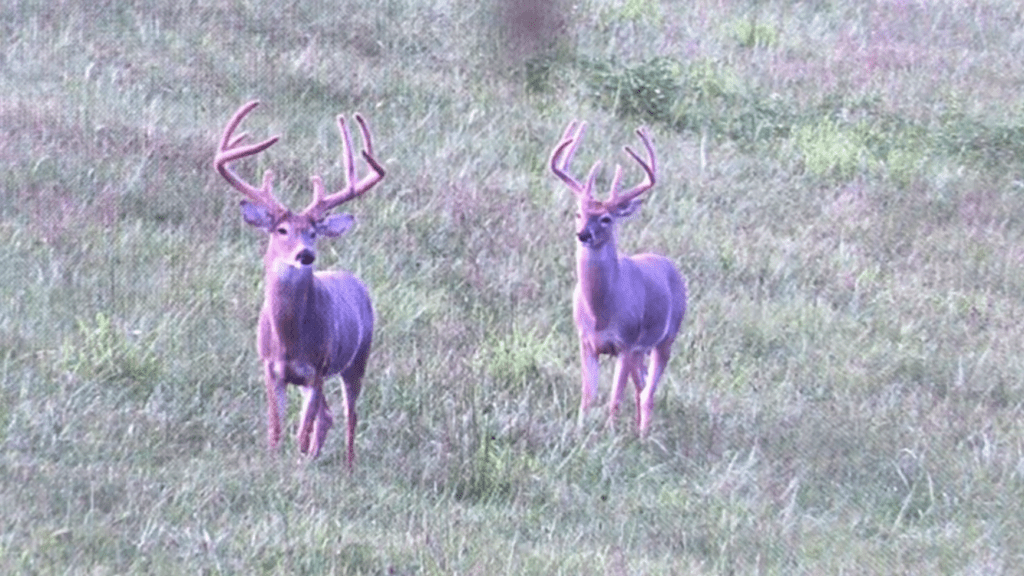
One thing I do want to say before we jump into it is when you’re looking at especially trail camera data, oftentimes unless you use a cellular trail camera, you’re checking those cameras during the rut. By the time you check them, it’s no longer relevant because everything is in such small windows during late October and throughout November. Unless you’re checking trail cameras every two or three days, which you shouldn’t do that. The information that you get from your cameras during the rut is almost irrelevant by the time you check them. I check the cameras during the season when I go into a hunter stand. If I’m not hunting that stand or that farm or that area, I still would check those cameras once a month.
With that information in mind, we’re talking about dates, we’re talking about the windows for the pre-rut, windows for the early season, windows for the rut. I don’t have the dates for everybody and for every state, but something that you can do if you run trail cameras throughout the season is go back and look at past years. A buck is going to hit his peak weight, his peak muscular frame and its peak toughness look right at the tail end of the pre-rut and at the beginning of the seeking phase when deer start moving and looking. For me, that’s generally between October 30th and November 2nd and 3rd.
That’s when a deer is going to hit his peak weight around here and that’s when he’s going to be the most muscular and most built-up and beefed up. After that, the buck is going to start eating less. They start running a lot more. They start covering a lot more ground and they start losing weight. For you out there, anybody who might be reading, if you don’t already know when it switches over from the pre-rut to the rut in your area, go back and look at your trail camera pictures from past years. If you have specific buck that you followed or had pictures of from summer or early season, all the way through the rut into the late season, you’re going to be able to look at those body mass and body weights and see when these transitions are and you can look. That way you can have it in your head. You can also call your state biologists. They’re going to be able to tell you when your peak dates are as well. That’s something that I’d like to do because ruts can vary slightly from location to location and even farm to farm for that matter.
When hunting, be knowledgeable about what the deer are doing, why they're doing it, and when they're doing it. Share on XLet’s talk about the chasing phase. We talked a little bit about the pre-rut. Let’s break it down in tactics that you used during the seeking phase, chasing phase, tending phase or locked-on phase and the post-rut.
That’s how a lot of hunters break it down. That seeking phase is that period between the pre-rut and when deer start coming into estrus. There might be a few does that enter estrus during that seeking phase. There’s not going to be a time. It’s not going to be the bulk of the does. During that time, there’s not a whole lot of breeding that’s going on, but that’s when the bucks are the most pent-up stress and most pent-up testosterone. They haven’t been able to do much breeding yet if any. They want to and their testosterone levels are through the roof. They ended up moving more. They start moving.
It depends on the deer. He might still be in some of his old patterns as he did during the latter portion of the pre-rut. You can still sometimes take advantage of bed-to-feed patterns that you saw throughout earlier portions of the season. That goes away once you get into that chasing phase or can go away. Every situation is different and as the research shows, some bucks don’t even participate in the breeding activity. Let’s not say that because it’s the middle of the rut doesn’t mean you can’t take advantage of a bed-to-feed patterns that you’ve been looking at since beginning of October. It might still happen. Nothing is ever black and white, just shades of gray, when it comes to hunting.
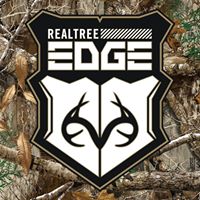
That’s something that I like to do whenever you hit that seeking phase. I’m still focused on buck bedding areas. If I see that’s not being effective, I’m going to start transitioning a little bit closer to the doe bedding areas. When I like to transition and start focusing on doe groups is when you get in closer to that chasing phase. That’s somewhere around that November 5th to 10th, somewhere in there. It might be a little bit later. It might be a little bit earlier, depending on the year and depending on the place. Once it gets a little bit closer to that chasing phase, that’s when I start focusing more on does and less on bucks. Whenever you get into that tending phase, the breeding phase where the actual breeding takes place, I’m still focused on does, but I’m going to be focused on pockets of cover where the mature buck or bucks that I’m hunting are going to be pushing those does too.
Whenever a doe enters estrus, more times than not, a big mature buck is going to push that doe where he wants her to go. If you hunt a property long enough, you can identify where the mature bucks like to push estrus does to get them away from the rest of the herd. Come the peak breeding times, that’s what I liked to focus on and do. A lot of mature bucks, when I say mature bucks, I’m talking five, six plus maybe four plus. I don’t rope in the two-and-a-half and the three-and-a-half-year-olds into this. Oftentimes, not even the four and a half-year-olds because you’re three and a half and four and a half-year-old deer did the bulk of the breeding, but as that buck gets ultra-mature and mega-mature, five, six, seven-plus. Research shows that they don’t let the rut make them do crazy things. I’m not saying that they won’t or that they don’t because they do, but those mega-mature, ultra-mature bucks are less apt to let the rut get them killed than a three and a half or a four and a half or maybe even a five and a half-year-old deer. If you’re hunting an old mature deer that you know is a smart deer and he has the type of personality that he does not let the rut get to him, you might still be able to focus on his bedding areas and capitalize that way.
You said a couple of things that I hope everybody will take to heart. One, the buck will push the doe where he wants her to be for a 24 to 48-hour peak breeding season during that time. You have to think when they disappear, people say they’re tending to lockdown. They’re breeding. You still can hunt them.
You’ve got to get in that bubble.
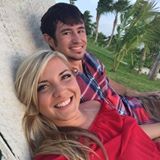
You have to get inside. One of the best guys that I know, Garrett Roe. He does that well in Kansas and he gets inside that bubble. Josh, you can speak to this, bucks won’t leave that doe, will they?
They’re sticking pretty tight to wherever that doe goes. I will say this, it can be hard to know where deer or where bucks like to push those does. A younger buck, a year and a half or two and a half-year-old buck, maybe even a three and a half-year-old buck, they’re not going to be as apt to push those does where they want to go. Those older bucks, those four and a half plus year old bucks, it’s not their first time on the block. It’s not their first time doing this deal. They’ve learned throughout the years that they can push those does to areas to get them away from other bucks.
If you hunt a property for consecutive years and you’ve got some history with a property, if you start to pay attention to that, thinking that way and make note of that during the peak rut, you’re going to start to see a trend. Properties that I’ve hunted for at least two to three, four years. Even in season if you get good daylight sightings and you get a big enough sample size, it doesn’t matter how long you’ve hunted it, but if you’ve hunted it consecutive, you’ll start to see where those mature deer like to push those does. You can see it based on your trail cameras you got out. You can see it based on the field sightings too.
Nothing is ever black and white, just shades of gray, when it comes to hunting. Share on XWe’ve covered a portion of the pre-rut. What about post-rut? I know some people that are very successful during the post-rut targeting large mature deer that all of a sudden, they need to replenish.
Based on the record books, the majority of the true top end, the biggest of the big deer, if you look at the ones that were killed during the rut, we’re not going to include the data from an early season or pre-rut or late season. If you look at the big deer that’s killed during the rut, most of your big old mature bucks killed during the rut are killed during the post-rut, which for me is going to be like November 20th to 30th, maybe even the first couple of days in December. There are different reasons for that. At that point, the deer have been pressured. It’s surprising that the big deer get killed that late.
A big part of it has to do with the fact that those older deer know how to play the game. They pace themselves. They understand that it’s not a sprint, it’s a marathon. Whereas those younger bucks, those years and a half, two and a half, three and a half-year-old deer, they don’t know that or haven’t quite committed it to memory. You’ll see that their inclusion or involvement in the rut starts to taper off much sooner than your four and a half, five and a half-year-old deer. Even though the three-and-a-half and the four-and-a-half, maybe even some of the five-and-a-half-year-old year will do the bulk of the breeding. When you get into the backend of that rut, you see your older deer taking part in finishing that process out.
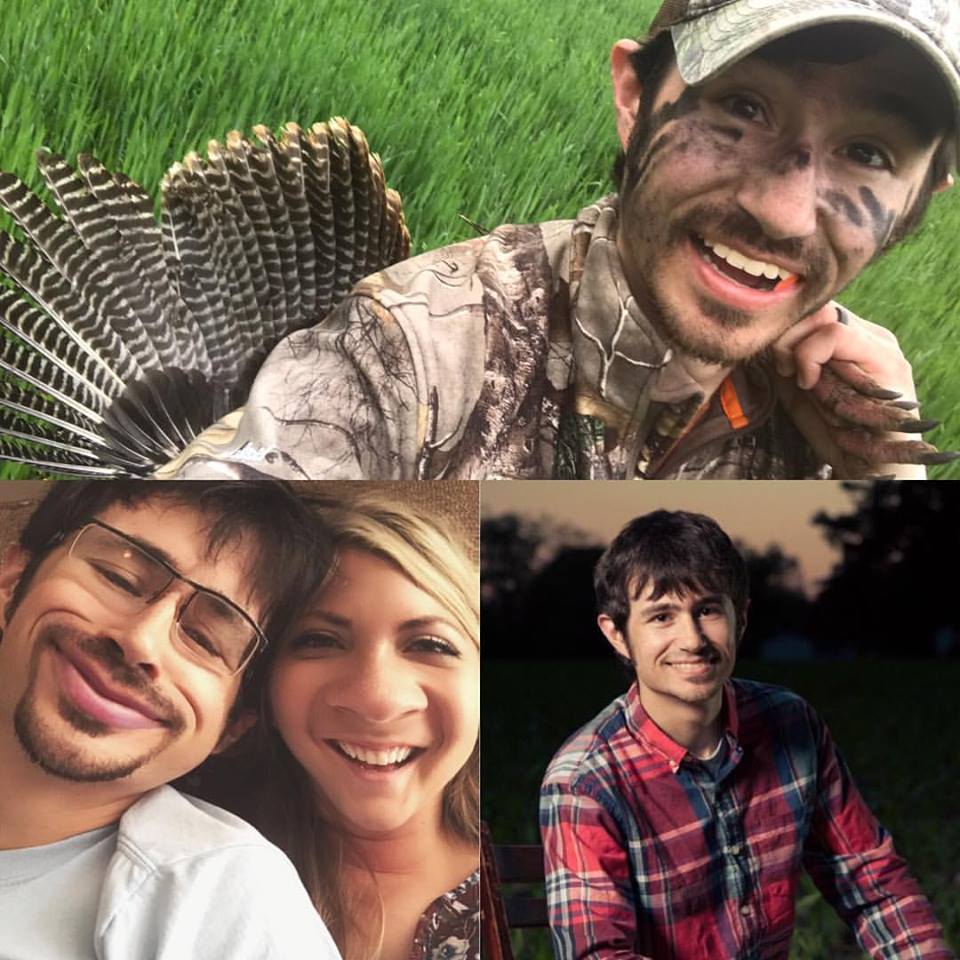
I don’t know why that is. That’s what the research I’ve looked at and the biologists I’ve talked to have told me. A lot of it probably has to do with the fact that your three-and-a-half and four-and-a-half-year-olds are going to get killed the first two weeks of the season because they’re the most daylight active during that period. That’s when most hunters are hunting anyway. You don’t have as many hunters on that last 3rd of November as you do the first two-thirds. At the same time, I keep going back to it, but the biggest reason is those old deer, those five and a half plus year old deer, they know how to pace themselves throughout the rut whereas younger bucks don’t.
What about the December breeding season, 30 days after estrus? Does will cycle through if they haven’t been bred plus the quantity year. Some of them, if they had good nutrition and are healthy, they will be able to breed in December, 30 days after the peak breeding season. What are your thoughts on that?
What a lot of people refer to as the second rut. Most of that is your young does, your fawns. The reason I say that is this, buck to doe ratios aren’t as bad as most people think they are. It’s biologically impossible. You can ask any deer biologists you want this question. I’m not one, but you can go ask your state biologists if you want and any of you readers out there if they disagree with me. I hear it all the time, “My buck to doe ratio is one to ten or one to fifteen or one to nine or one to eight. It’s biologically impossible for that to be the case. I’m talking pre-hunt ratios. Pre-season ratios are impossible for there to be more than four to five does per buck. That’s extremely rare for most places.
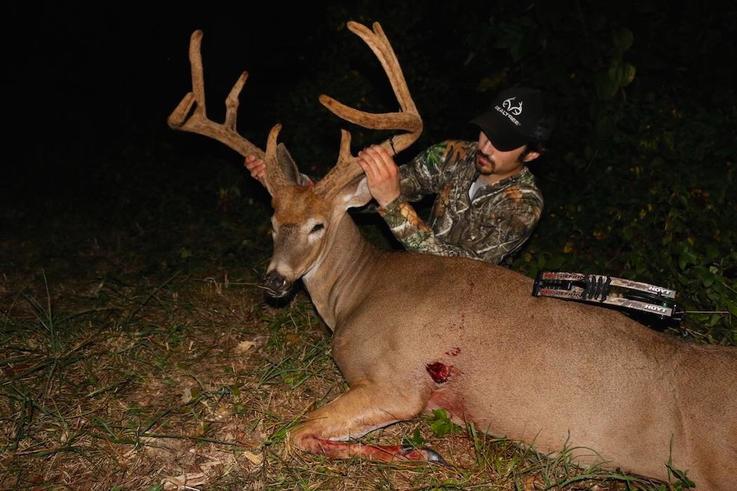
A more common buck to doe ratio is one to two, maybe one to three. With that said, the bulk of the does are getting bred during the primary rut maybe not everywhere, but in most places and in most situations. Those bucks to doe ratios become more skewed throughout the season as people are hunting. It can be skewed either way. It can be skewed better and closer to one to one or further away from one depending on the location and what the hunters had been doing there. That’s something to think about. Biology tells us that it’s impossible for there to be more than one to four, maybe one to five bucks to does.
The reason for that is every year the fawn crop basically re-corrects the buck to doe ratio. The post-rut is mostly comprised of younger does that got bred. There’s obviously room for does to get missed. I’m not saying does don’t get missed because they definitely do. I’ve seen adult does get that break during the month of December too. I’m not saying that that doesn’t happen, but more times than not in areas with good habitat, for this area where we’ve got a lot of ag, as many as 40% to 50% of the doe fawns can breed their first year at some point during the season or during that winter. Whereas in areas that are maybe down South, the deep South that doesn’t have as good habitat and not as good a food sources, you may only see 5% or 10% of the doe fawns. It might be even lower than that, maybe 2%, 3% or 4% of the doe fawns breed. That’s my take as far as the age, class of the does that do the breeding during that second post-rut.
What’s your thought on all-day sits?
Whenever a doe enters estrus, more times than not, a big mature buck is going to push that doe where he wants her to go. Share on XI’ll do them. I don’t do them all the time. I restrict all-day sits to situations where I know that a buck is moving during that time. That’s my answer outside of the rut. I won’t do an all-day sit unless I know that a buck potentially could be moving through there and habitually does that. During the rut, I will do all-day sits. A lot of big deer get killed between 10:00 and 2:00. As matter of fact, I’ve killed deer between 10:00 and 2:00. It’s one of those things where if you can sit there and do it. Not everybody can, whether that be physically or because they have time constraints or whatever that might be.
If you can do it, I say go for it. There are multiple reasons primarily a lot of deer move between ten and two, but more than that, it has to do with how much pressure you put on those deer. If you go in there for once and go out once, that’s half as much scent you leave behind. It’s half the chance of spooking deer versus you go in early that morning before daylight and you come out right before lunch to go eat something. You come back in right after lunch and you leave again after the afternoon hunt. That’s four entry-exit routes there. Whereas if you’re doing all-day sit, it’s two. You reduce the likelihood of bumping deer by half. You reduce the likelihood of deer catching your ground sent about not maybe half, but you’re leaving less ground scent that way. I definitely am an advocate for all-day sits.
One thing I’ve thought about and done it wrong more times than I’ve done it right. I’m in a great place. There’s a river to my right. There’s a hillside to my left and it’s a natural funnel. I all-day sit during the rut. I’ve seen deer all day and I know there’s deer within 100 yards of me and now it’s pitch blackout. How do I get out of there?
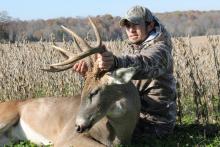
It sounds to me like the best entry and exit route for that particular location would be by a canoe. If there’s a deer under your tree, typically, I like to wait until that deer has wandered off before I get out the tree. I’ll stay at the tree stands two hours after dark just waiting for the deer to clear. It’s one of those things where as far as the general entry and exit route. If you’ve got a river or a creek or something like that that’s right next to your stand, by far and away the best way in and out of that place, hands down is with a canoe or kayak or some other non-motorized boat.
People that I’ve talked to about that are like, “How do I get my deer out if it’s not a full-size canoe?” It’s simple. You can cut them out. You can leave them and come back in later in your normal entrance and access from the land or you can take him out with the canoe. Deer guys do that all the time. That’s one thing we talked. You got to think out of the box and you get to figure out, “What’s the best way to do this?” Use topography, use all the things, but you got to think “What’s my minimum pressure on these deer and how do I do it best?” That comes down to sometimes, Josh, I’m sure you don’t hunt a stand because everything isn’t right. Is that correct?
Rarely if ever will all the conditions can be perfect. The mature deer that I killed, it’s just off the wind. I would love to have the wind right in my face, but that rarely happens. The odds of seeing a mature deer go down whenever the conditions are perfect for the hunter. Whenever the conditions are more in favor of or better suited for that deer, you’re more likely to see them in daylight. We can give deer too much credit maybe. I do stand at least my in current thought process that the more conditions are in that deer’s favor, the more likely he is to move in daylight hours, especially outside of the rut. I will definitely have stand locations even if the situation or conditions aren’t perfect.
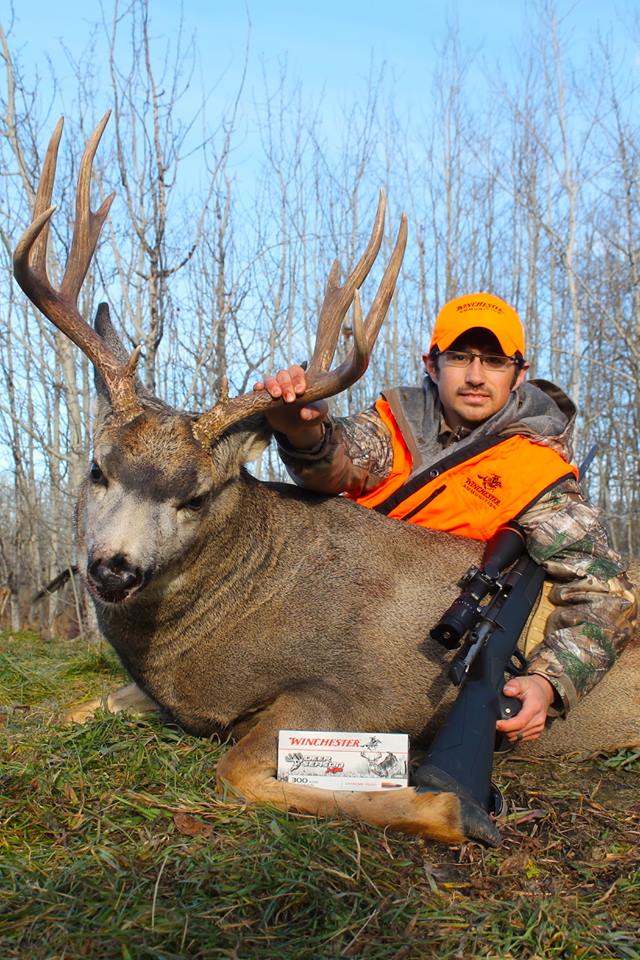
With that, we’re going to wrap up this three-part series with Josh Honeycutt, Deer Hunting Editor for Realtree.com. Josh, it’s always a pleasure to connect with you. I can’t wait to see your pictures from the season and connect with you next winter as we do a recap of 2019.
I appreciate you having me on. We’ll be filming for the Midwest Whitetails Chasing November. You can follow all the action there. It’s a weekly series and I’ll be contributing all of my hunts and footage each week to that series and hopefully, we’ll see some dead deer this fall.
Is that with Bill Winke?
Yes.
If you’re not a member already, the name of his show is Midwest Whitetails, is that correct?
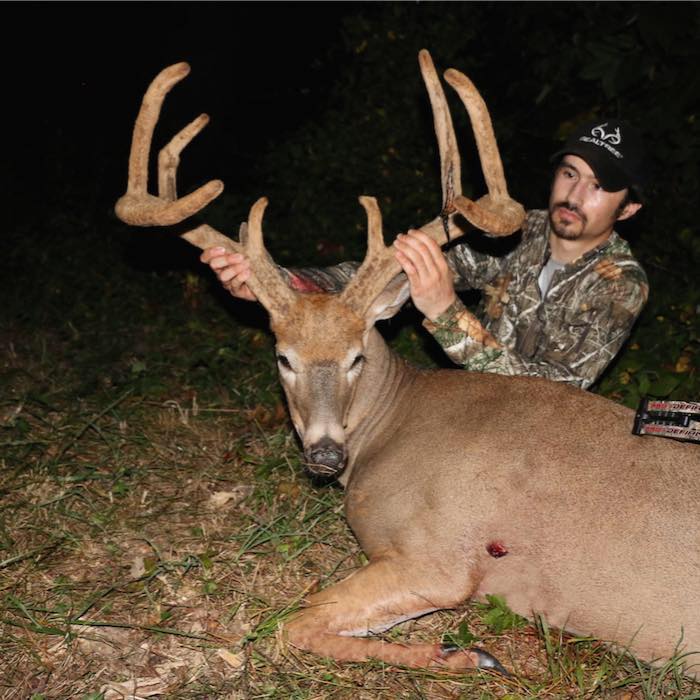
You can watch the show. You’ll have to download the Realtree 365 app and you’ll find the show right there. You can also find it on YouTube and MidwestWhitetail.com.
If somebody wants to reach out to you, what’s the best way to do that, Josh?
I’m on Facebook, Josh Honeycutt or Instagram @Josh__Honeycutt and feel free to give me a shout. If you want to look at some of the contents that we have, you can go to Realtree.com. You can also go to MidwestWhitetail.com because I’m contributing a lot of written and video content there as well. Either of those places will get it done.
As always, Josh, it’s a pleasure to visit with you. Thanks for your insight.
Thank you. I appreciate the time. It’s always an honor. Good luck to you and God bless.
Important Links:
- Realtree.com
- Realtree 365
- MidwestWhitetail.com
- Josh Honeycutt on Facebook
- @Josh__Honeycutt on Instagram
- https://www.Realtree.com/turkey-blog-with-steve-hickoff/video-how-to-get-women-into-hunting
- https://www.Realtree.com/users/jhoneycutt
- https://www.QDMA.com/author/joshhoneycutt/
About Josh Honeycutt
 Josh Honeycutt is a back-country deer hunter from Kentucky who grew up slinging arrows and bullets at pressured river bottom whitetails. If it’s deer or turkey season, you’ll find him high in an oak tree or sitting up against one. And he enjoys spending that time in the outdoors with his wife, Kathryn, as well as the rest of his family and friends.
Josh Honeycutt is a back-country deer hunter from Kentucky who grew up slinging arrows and bullets at pressured river bottom whitetails. If it’s deer or turkey season, you’ll find him high in an oak tree or sitting up against one. And he enjoys spending that time in the outdoors with his wife, Kathryn, as well as the rest of his family and friends.
Josh has hunted the prairie whitetails of Kansas to the river bottom bucks of Kentucky to the pine-dwelling deer of South Carolina. Simply put, he loves to hunt deer. And it doesn’t matter where, either.
His passion for the outdoors led to a career as an outdoor writer, photographer and videographer. Josh has been a regular contributor to Realtree.com since 2012 and came on board as the associate editor and deer hunting editor in July of 2015. He writes the Brow Tines and Backstrap blog. His work has been published in nearly 50 publications and websites including: Field & Stream, Outdoor Life, North American Whitetail, Whitetail Journal, Game & Fish, Fur-Fish-Game, and more.
